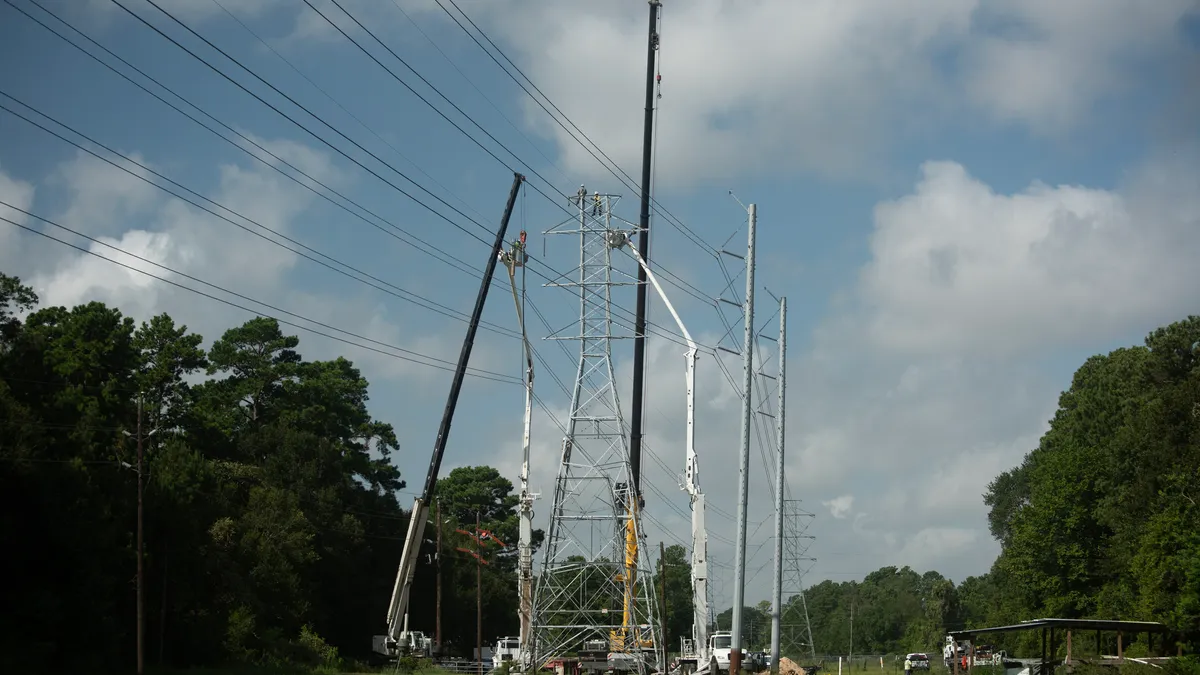American Electric Power, Dominion Energy Virginia and FirstEnergy are proposing several multi-state transmission projects in the PJM Interconnection they designed through an “innovative joint planning agreement,” the companies said Monday.
"By leveraging the expertise and resources of three industry leaders whose transmission zones border one another, we're better able to develop superior and more cost-effective solutions required to effectively resolve reliability issues across the PJM region,” Ed Baine, Dominion Energy Virginia president, said in a press release. “These projects are more comprehensive and will be more effective than what each of our companies would be able to develop individually."
The companies said they proposed the 765-kV, 500-kV and 345-kV transmission lines in Virginia, Ohio and West Virginia through PJM's annual Regional Transmission Expansion Plan, or RTEP, open window process in September.
FirstEnergy is unable to discuss the projects’ details at this stage of PJM’s planning process or provide more information about the joint planning agreement between the utility companies, Will Boye, a FirstEnergy spokesperson, said.
Through its RTEP process, PJM identifies transmission system upgrades needed to maintain grid reliability, improve the economic flow of electricity by reducing congestion and allow generation and merchant transmission to connect to the grid.
After identifying its baseline transmission needs, PJM opens a competitive process seeking proposals to meet those needs. PJM started taking proposals for its RTEP window 1 in mid-July and closed the solicitation period in mid-September.
PJM received dozens of proposals in response to the solicitation. The proposals are heavily redacted, including the names of the companies proposing the projects.
There are 18 proposed projects that would cross the Dominion, Allegheny Power — part of First Energy’s footprint — and AEP zones, which matches the description by the three utilities announcing their joint effort, according to a list of proposals offered in the solicitation. Six of those projects are listed as joint projects and are described in a Tuesday presentation by PJM staff.
Eight of the proposed projects with similar descriptions include 765-kV, 500-kV, 230-kV greenfield substations and greenfield transmission lines that would complement a PJM proposal. Those proposals include a binding cap on capital costs and appear to be offered by NextEra, based on the presentation.
For example, one of those projects, dubbed F8 Solution, would include about 225 miles of new transmission line and cost an estimated $1.9 billion in 2029 dollars when it is slated to come online.
Using the proposals, PJM staff will develop a transmission plan to meet its pending needs. PJM aims to have developed a short list of projects by next month plan and have a proposed RTEP reviewed by the Transmission Expansion Advisory Committee at December and January meetings, according to the presentation. Staff aims to send a proposed RTEP to the grid operator’s board in the first quarter next year.
The need for additional West-East reinforcement on PJM’s transmission system is materializing earlier than anticipated due to higher load growth in the New Jersey, Pennsylvania and Virginia areas, according to the presentation.
PJM’s 2023 RTEP process identified 48 baseline projects with an estimated cost of about $6.6 billion to maintain grid reliability. The plan calls for $180 million additional network transmission projects needed to interconnect planned generation projects.















